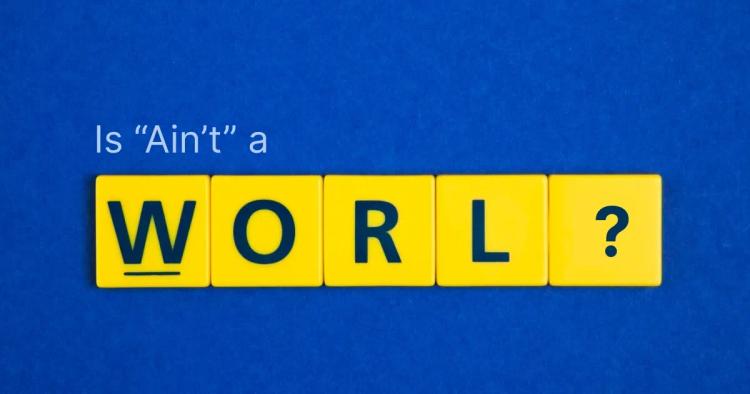In the vast world of language, small words often carry big meanings. One such word is "the." Despite its size, this tiny article plays a significant role in English grammar. Let's delve into the depths of this seemingly simple word to uncover its complexities and understand its importance in communication.
Understanding "the" requires a nuanced approach, as its usage extends beyond the mere identification of specific nouns. It acts as a linguistic marker, indicating whether a noun refers to something definite or indefinite within the context of a sentence. This distinction is crucial for conveying precise meaning and clarity in communication.
Defining Parts of Speech: A Brief Overview
Before we dive into the specifics of "the," let's take a moment to understand what parts of speech are. In grammar, parts of speech categorize words based on their function and meaning within a sentence. These categories help us understand how words relate to each other and how they contribute to the overall structure of language.
Understanding the basic parts of speech, such as nouns, verbs, adjectives, adverbs, pronouns, prepositions, conjunctions, and articles, provides a foundation for grasping the role of "the" as a definite article within English grammar.
Each part of speech serves a unique purpose in constructing meaningful sentences, with "the" playing a crucial role in specifying nouns.
The Role of Articles in English Grammar
Articles are a type of determiner used to specify nouns. In English, there are two main types of articles: definite (the) and indefinite (a/an). These articles help us indicate whether we are referring to something specific or nonspecific. "The" falls under the category of definite articles, and its role is crucial in providing clarity and precision in our communication.
Articles function as markers that precede nouns, providing essential information about the noun's definiteness or indefiniteness. While indefinite articles (a/an) introduce nonspecific nouns, definite articles (the) specify particular nouns, highlighting their uniqueness within a given context.
"The": A Definite Article Explained
"The" is what we call a definite article. It's used before nouns to indicate that the noun is something specific or known to both the speaker and the listener. For example, if I say, "Please pass me the book," I'm referring to a particular book that both you and I are aware of.
Definite articles, such as "the," play a crucial role in pinpointing specific entities within language. They denote familiarity or previous mention of a noun, establishing a direct connection between the speaker and the listener regarding the intended referent. This specificity helps to eliminate ambiguity and facilitate effective communication.
The Function of "The" in Sentences: Specificity and Universality
One of the key functions of "the" is to denote specificity. When we use "the" before a noun, we're signaling that there's only one of that particular thing, or we're referring to a specific instance of it. However, "the" can also be used to indicate universality, as in "The sun rises in the east." Here, "the" is used to refer to something universally known or understood.
The function of "the" extends beyond the mere specification of individual nouns; it also serves to convey broader concepts or universal truths. By employing "the" in sentences, speakers and writers can draw attention to facts, customs, or phenomena that are widely recognized within a given cultural or linguistic context.
Common Usage and Examples of "The" in Everyday Language
In everyday language, we encounter "the" frequently. We use it before nouns to specify particular objects, people, or places. For instance, "the dog," "the Eiffel Tower," or "the president." Without "the" these phrases would lack clarity and precision.
"The" is omnipresent in everyday discourse, seamlessly integrating into our language to specify specific entities or to highlight their significance within a given context. Whether referring to tangible objects, abstract concepts, or unique entities, "the" serves as a linguistic anchor that grounds our communication in shared understanding and mutual recognition.
"The" as a Determiner: How It Modifies Nouns
As a determiner, "the" modifies nouns by specifying which one we're referring to. It helps us distinguish between one specific item and others of its kind. For example, "the cat" refers to a particular cat, whereas "a cat" could refer to any cat.
Determiners, including "the," exert precise control over the nouns they precede, delimiting their scope and clarifying their referential status within a given discourse. By selecting "the" as a determiner, speakers and writers imbue nouns with specificity and relevance, guiding listeners and readers toward a more focused interpretation of the intended message.
The Role of "The" in Different Sentence Structures
"The" can appear in various sentence structures, including simple sentences, compound sentences, and complex sentences. Its placement and usage depend on the context and what the speaker intends to convey. Understanding how "the" fits into different sentence structures is essential for mastering its use in communication.
In sentence construction, "the" functions as a versatile tool for signaling specificity, introducing new information or referencing previously mentioned entities. Its placement within different sentence structures, whether at the beginning, middle, or end, reflects the syntactic and semantic relationships between nouns and other elements of the sentence.
Mastery of "the" usage entails proficiency in adapting its positioning and function to suit the communicative needs of diverse contexts.
Grammatical Challenges: Common Errors Involving "The"
Despite its importance, "the" can sometimes be tricky to use correctly. Common errors include omitting "the" when it's needed or using it incorrectly before nouns. These mistakes can lead to confusion or ambiguity in communication, so it's crucial to be mindful of them.
Navigating the intricacies of "the" usage requires vigilance against common pitfalls and misconceptions. Whether grappling with its omission, misplacement, or overuse, language learners and speakers must remain attentive to the nuanced rules governing its application.
By addressing common errors and refining their understanding of "the" individuals can enhance the clarity and precision of their communication.
Using Copychecker Tools to Enhance Your Understanding of "The"
In today's digital age, we have access to various tools and resources to help us improve our writing skills. Copychecker tools, in particular, can be invaluable for checking grammar, punctuation, and usage, including how we use "the" in our writing. These tools can identify errors and provide suggestions for improvement, allowing us to refine our language skills.
Leveraging technology to augment language proficiency represents a proactive approach to linguistic refinement. Copychecker tools offer users the opportunity to scrutinize their usage of "the" within the broader context of their writing, pinpointing areas for improvement and offering actionable insights for enhanced clarity and coherence.
By integrating these tools into their writing process, individuals can cultivate a more nuanced understanding of "the" and its role in effective communication.
Leveraging Grammar Checkers: How They Analyze "The" in Context
Grammar checkers analyze the context in which "the" appears to ensure it's used correctly. They examine the surrounding words and the overall structure of the sentence to determine whether "the" is appropriate. By leveraging grammar checkers, we can gain insights into our usage of "the" and learn how to use it more effectively in our writing.
Grammar checkers are invaluable resources for scrutinizing "the" usage within the broader context of written discourse. Through sophisticated algorithms and linguistic analyses, these tools offer real-time feedback on the appropriateness and accuracy of "the" placement, guiding writers toward more polished and articulate expression.
By harnessing the capabilities of grammar checkers, individuals can refine their mastery of "the" and cultivate greater precision in their communication endeavors.
FAQs
What form of speech is the word the?
"The" is a definite article, which is a type of determiner used to specify nouns.
What article of speech is the word the?
As mentioned, "the" is classified as a definite article in English grammar.
What is the meaning of the word the?
The word "the" signifies specificity or definiteness when used before a noun, indicating that the speaker is referring to a particular instance of that noun.
How is the used in a sentence?
"The" is typically placed before a noun to specify or denote something specific or previously mentioned. For example, "The cat sat on the mat."
Conclusion
In conclusion, "the" may be a small word, but its role in language is significant. By understanding its function as a definite article and its impact on sentence structure and meaning, we can enhance our communication skills. Whether we're writing an essay, composing an email, or engaging in conversation, embracing the nuances of "the" allows us to express ourselves clearly and effectively.
So, let's continue to explore and appreciate the power of this humble article in shaping our language and communication.




